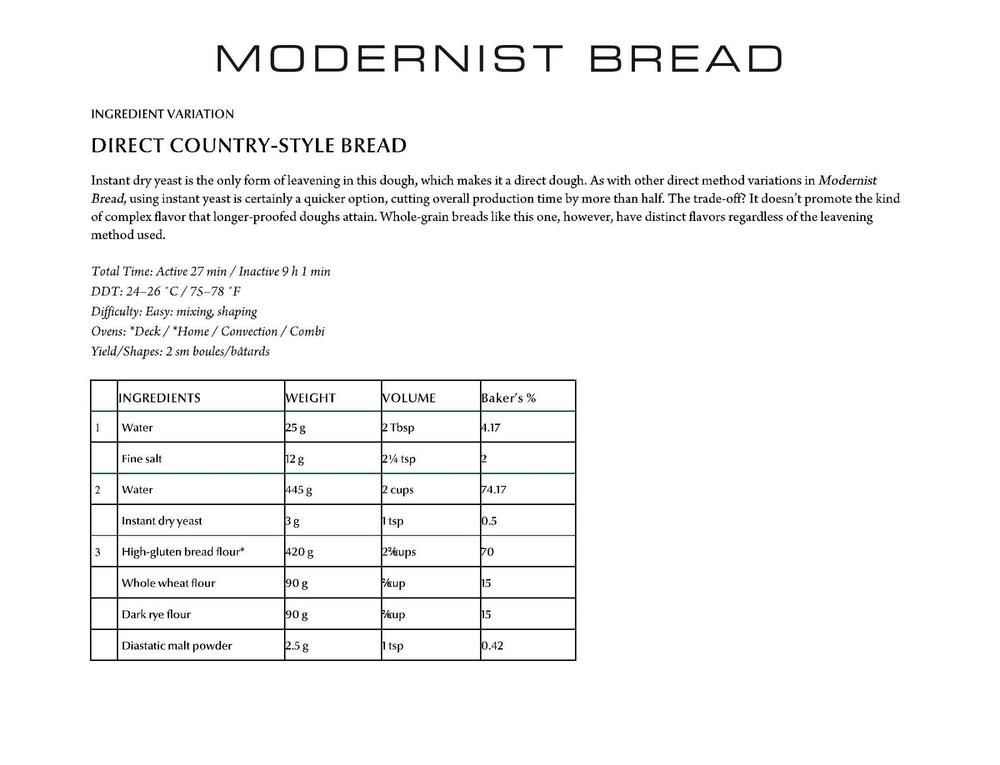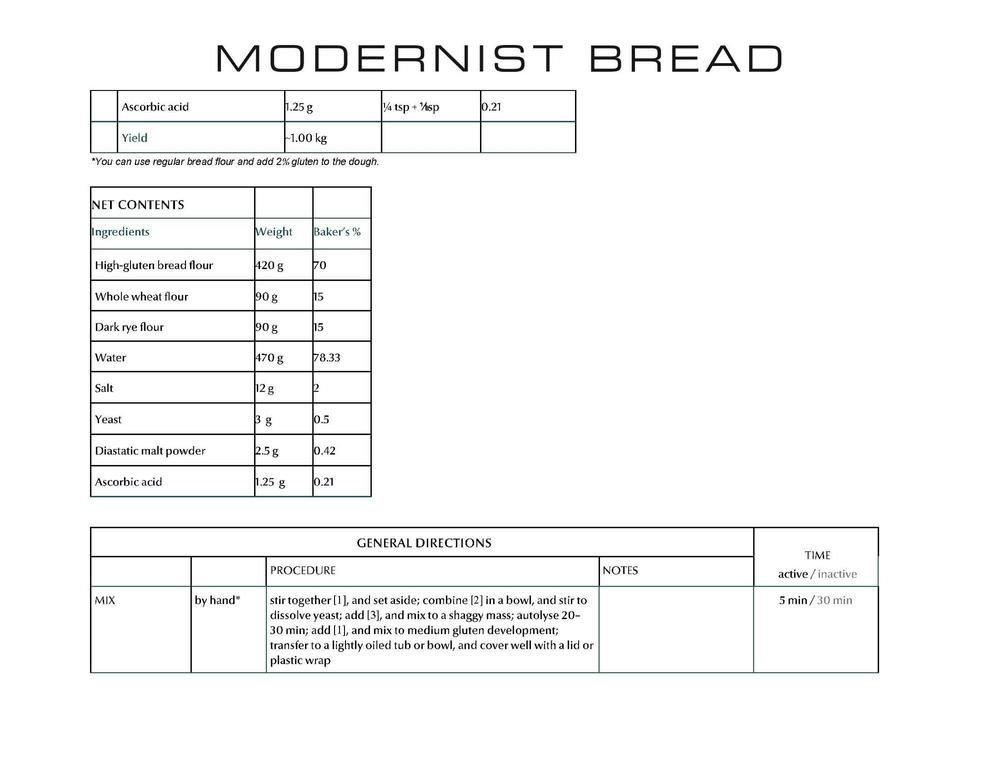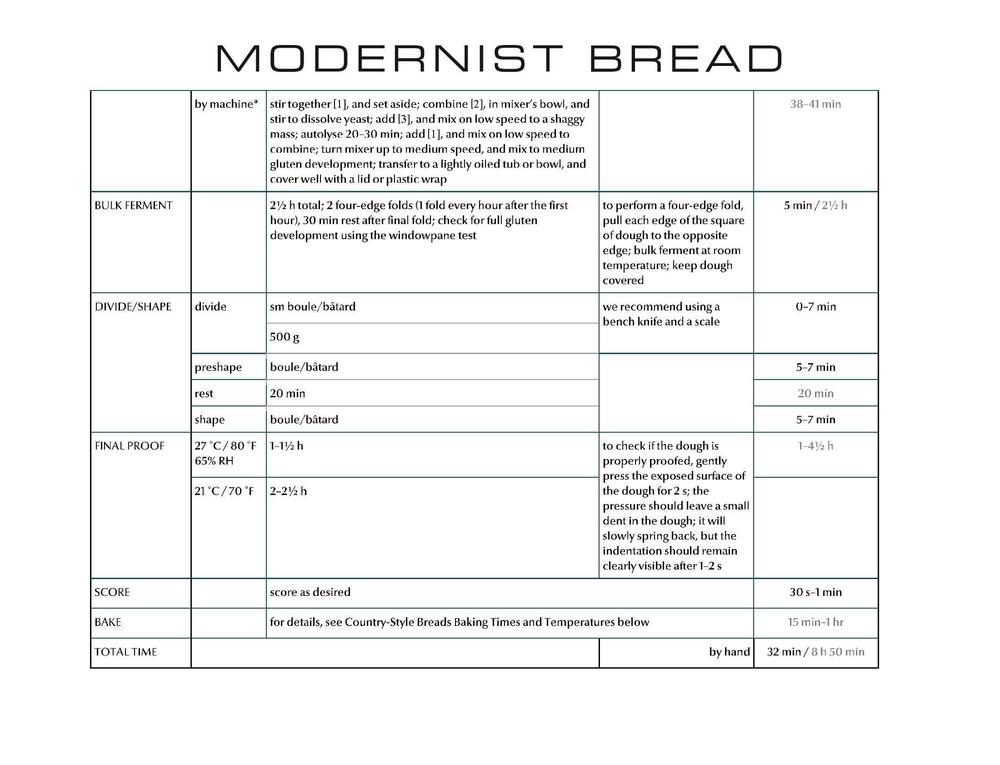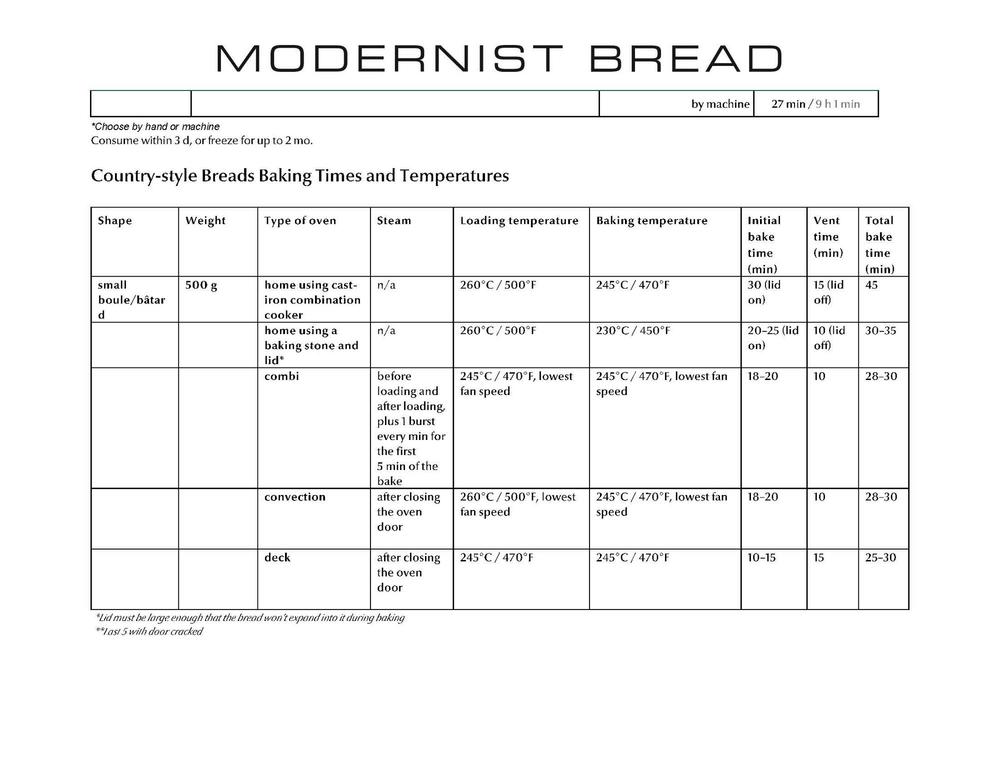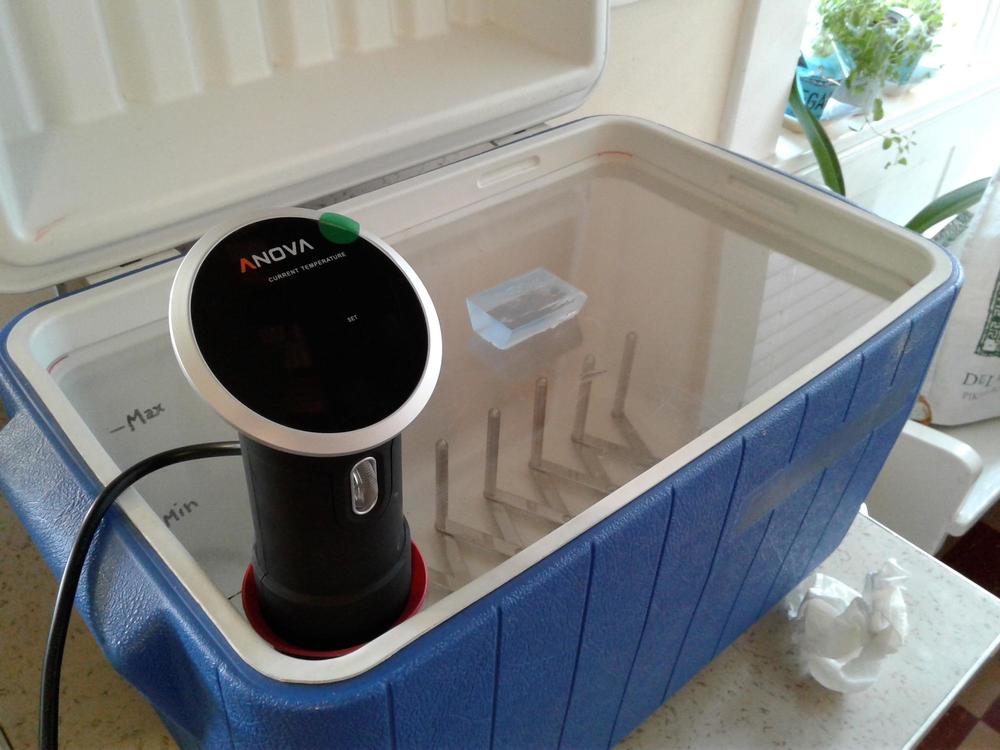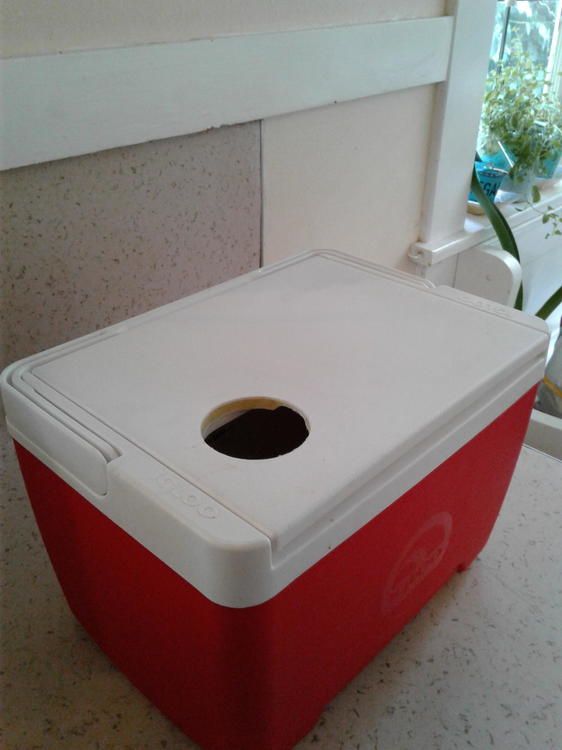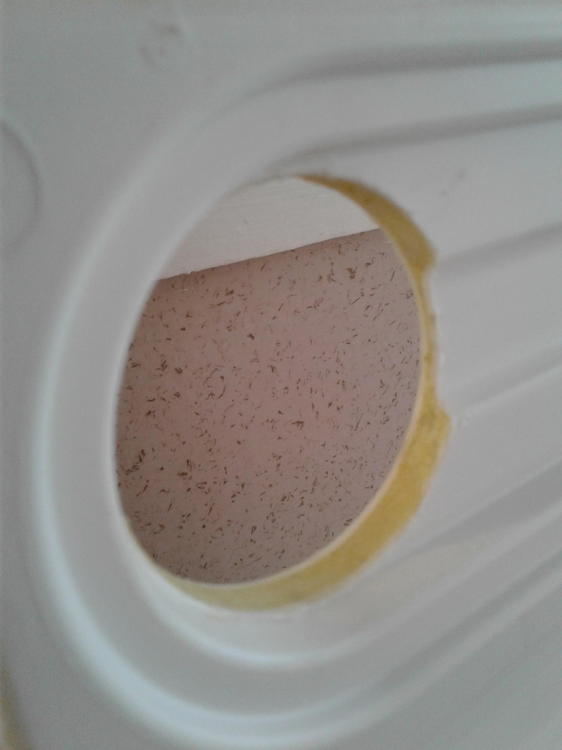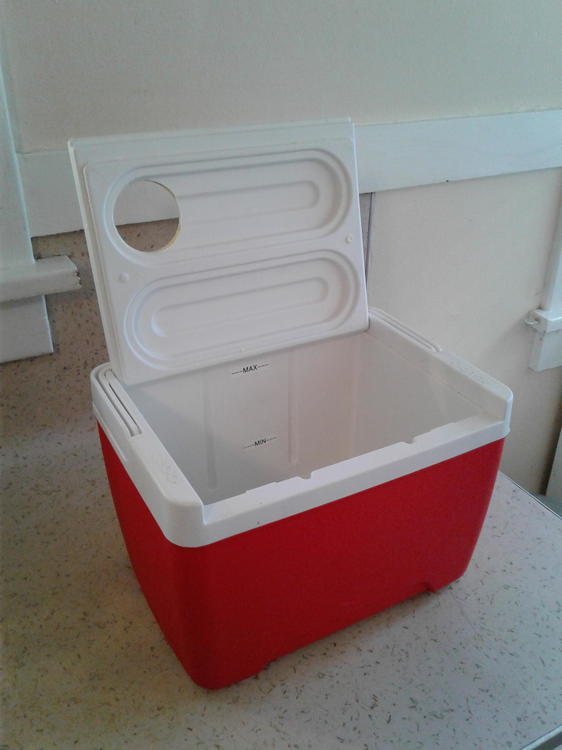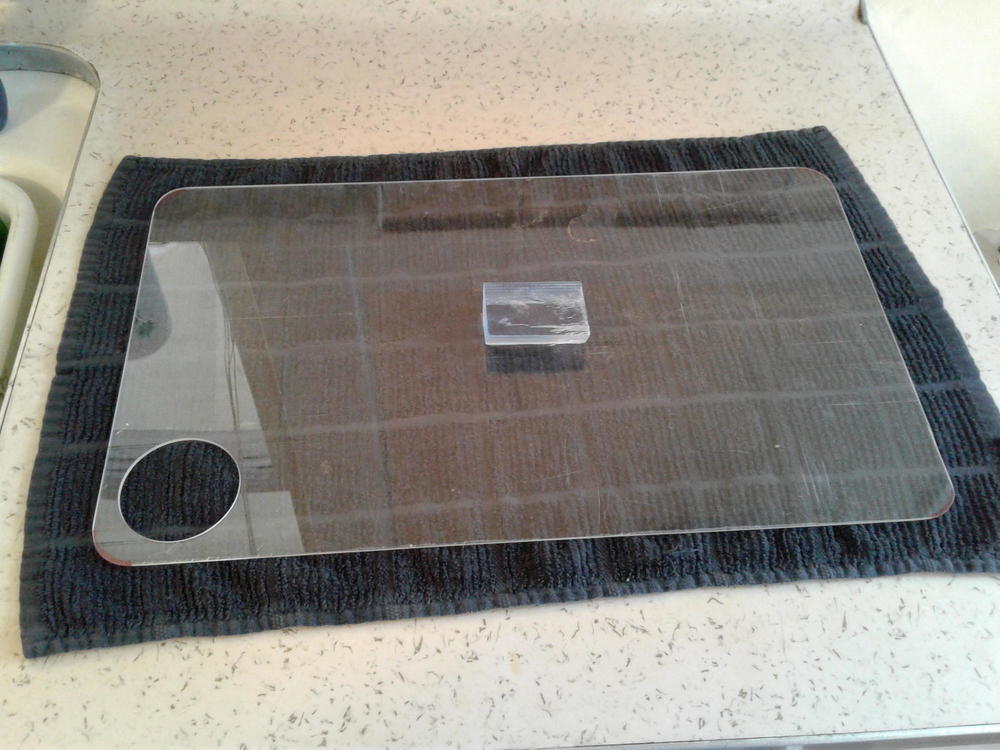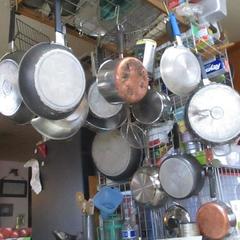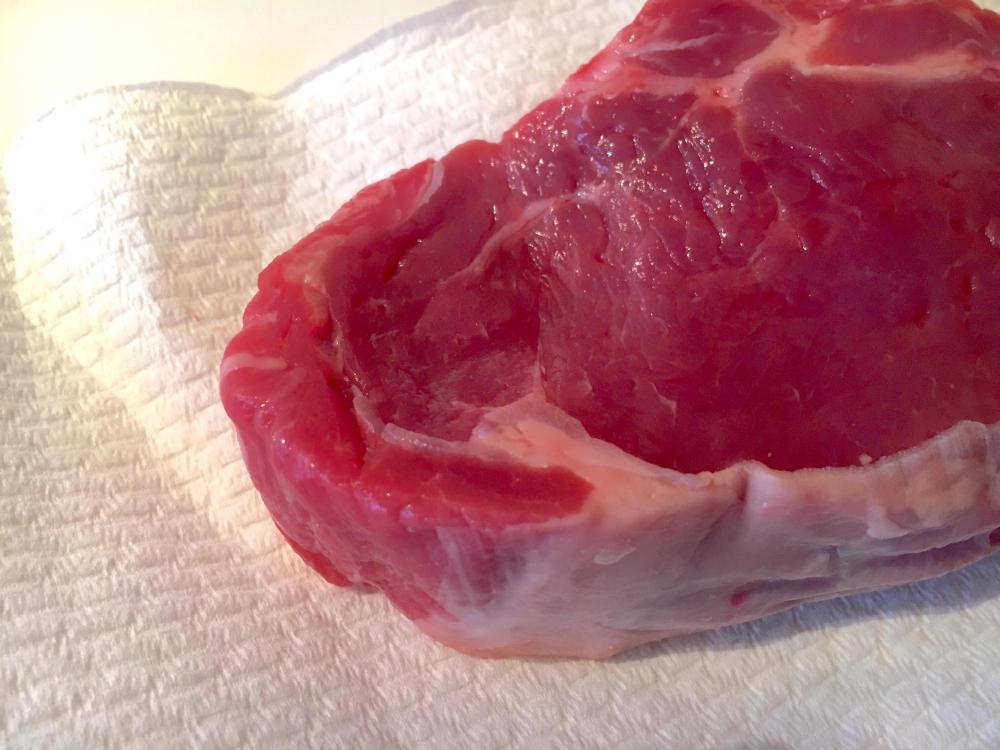Search the Community
Showing results for tags 'Modernist'.
-
Is there a discussion in the book about the purpose of adding ascorbic acid? I just saw the contest #2 in which the recipe called for it. I'm curious because a woman I know on the internet used to work in a bakery in Vietnam, and said that to get similar results to the banh mi there, you need to add ascorbic acid. Does it act as a gluten relaxer? Traditional banh mi have a very tender and crisp crust, and a very light and tender, relatively closed crumb.
-
Modernist Bread is out now, but maybe you haven't taken the plunge. Here's your chance to win your own copy, courtesy of the eGullet Society for Culinary Arts & Letters. The Cooking Lab has provided us with a couple of other prizes that will go to a second and third winner: second place will win an autographed poster and calendar, and third place will receive an autographed poster. They are also providing an autographed bookplate for the first place winner's copy of Modernist Bread. The rules are simple: we are going to post recipes from the book that the team at The Cooking Lab has graciously provided for this purpose. To enter into the contest, you need to bake one or more of these recipes and post about them in the official contest topics by the end of November 2017. Winners will be drawn at random from those posting pictures and descriptions of their completed loaves. Complete rules and other details can be found here. For part two, we're featuring another cornerstone recipe from the book: Direct Country-Style Bread. The only leavener here is instant yeast, so production time is considerably shortened. The relative lack of flavor compared to long-proofed doughs is offset by the use of whole grains. Courtesy of The Cooking Lab, here's that recipe (extracted from the book and reformatted for purposes of this contest):
-
Hello! I was wondering if anyone on here has tried using an induction cooktop with confection making (caramels, fondant, marshmallows ect...). My stove has literally three settings, and the low setting still burns sugar and there is no such thing as maintaining any sort of "simmer". I was looking into getting a cooktop and buying some copper sugar pots and mauviel makes this thing that goes inbetween. I would love to hear any input into this idea or your experiences! ~Sarah
- 2 replies
-
- Chocolate
- Confections
-
(and 3 more)
Tagged with:
-
Good afternoon everyone! I currently own a MiniPack MVS31x chamber style vacuum sealer and am wondering if a Polycience vacuum canister will work in my machine? The intended use is for making a larger batch of aerated mousse.
-
Hi :-) Bought 1.7Kg pork chunk, might be a bit of weird cutting, seems like a rack of pork chops caught between V shaped in bones. Would like to sous vide it whole without further cutting to single steaks and would be glad to get a direction for temp and time, from what i've seen 60-62C area might be great to keep it juicy but i'm lost with the time, as it is a big chunk and not single steaks.. Thanks !
-
Yes, the vacuum blender, Luddites. http://www.gadgetreview.com/what-is-a-vacuum-blender I am waiting for the WiFi version, so I can turn my smoothie into soup from Mars.
-
Wonder if someone could get me in the ballpark..the amount of Transglutamase...to make scallop noodles.. % I mean ill use a food processor..to purée the scallop.. then inject into a water or broth..to cook?
-
Hi, I've tried to make the spherical mussels recipe from the Modernist Cuisine books and it didn't work as I expected, so I would appreciate any advice that may help here. The recipe calls for calcium gluconate which I couldn't get hold of, so I replaced it with calcium lactate gluconate that I had at home. I used the same ration (2.5%) When I tried to create the spheres in the sodium alginate bath I encountered two main problems; 1. instead of spheres the mixture just stayed as uneven shape on the surface. The bath was 1Kg. water with 5gr. sodium alginate and I let it rest in the fridge for 24 hours before using it so I think the problem is not here. However, the mussels jus mixture (100gr. mussels jus, 0.5gr. xanthin gum and and 2.5gr. calcium lactate gluconate) had a lot of air bubbles in it. Can that be the issue? 2. In the book the spheres seem to be completely transparent whereas my mussels jus mixture was pretty white and opaque. Is it because I replaced calcium gluconate with calcium lactate gluconate? Or maybe it's because the jus itself should be clarified before it is used? Thanks in advance for your support, Tom.
-
OK, someone in an earlier thread asked me to post photos of this effort to make insulated, evap-resistant bathtubs for my new Anova ciculator. I decided to make two. The first was to just use my medium-sized Coleman PolyLite 40Q cooler. This is my Go-To grocery cooler, so I didn't want to sacrifice it just for SV, so I cut a plexiglass scrap into a cover that sits down inside on the cooler's interior rim, and then hole-sawed the corner of the clear plexi to accept the Anova. Someone specc'd the hole at 2.5" diameter, but I found that's a bit too large. 2-3/8" or 2-7/16" diameter would probably have been better. I solved the issue by adding a toilet flush gasket that seals the hole and stabilizes the Anova. The second was a smaller 9Q Igloo picnic cooler I never used, is only $15 new , and therefore didn't mind sacrificing. This I hole-sawed directly through the cooler's removable lid. Because the lid was hollow, I sealed the thing up with squirt foam and silicone caulk. The gasket seals this one, too, just moving from one cooler to the other with the Anova. So far, after a few uses, I can say that the setups hold heat extremely well, and don't lose much water by evaporation. The 40Q only dropped a few degrees after being banished to the back porch overnight in 40F weather. It would not have taken much time or juice to get it back on-temp. I'll break out the Kill-A-Watt later, and compare energy use. Cost was $6 for the IKEA rack, and $3.49 for the gasket. I had everything else.
-
I thought that I had read that if you SV in bulk, and the freeze, that you were supposed to SV the item again based using the same time in the bath as when you first cooked the item. I tried SVing 4 meals's worth of pork strips and froze 3 of the 4. When I re-SV'ed a package last night (at a slightly lower temp to not increase the doneness, they were borderline dry, way different than the first package right out of the bath. What am I missing?
-
Besides the health concerns, deep frying steak is the best way to get an even colour and crust on steak. In my most recent experiment, I tried the technique of deep frying prior to, and after, cooking the steak sous vide. In the past, I had only fried the meat after it had been cooked. The meat was veal chops. As can often be the case, the meat was mishandled somewhere along the way. The obvious signs of this were indentations in the surface. This kind of thing makes it tricky to pan fry and get even colour. This soft meat is also tricky to vacuum seal as it can often be further compressed and misshapen in the process. I was delighted to observe that a short 45 seconds in hot oil fixed both of these issues! I didn't expect that. Nice. The meat plumped up and that indentation was gone. It also held its shape nicely when vacuum packed. Time and temperature matters. The difference can be just a few seconds or degrees. In the next picture, the time was the same but the oil was 20°C hotter for the steak on the left and the crust is noticeably darker. My next experiment will try 30 seconds at 200°C before and after. The goal is to keep the crust as thin as possible. I hadn't anticipated the secondary benefits of deep frying prior to sous vide. The plumping of the meat and slight firmness made them easy to package and present. I am curious whether anyone has observed this. I am also curious if it would it work in hot water, rather than oil.
-
Anyone tried this? I'm trying to think of something novel to do for my friends at an upcoming birthday weekend. We are renting a house in the Hunter Valley (Australian wine region) and food is a major component of our weekend. Last time I did fizzy fruit—the grapes and oranges were awesome and everyone enjoyed the unique experience. I want to do something quirky like that again. The whipping siphon is easy to transport so I'm interested in using it. The siphoned soufflé in Modernist Cuisine, volume 4 page 297, has a chocolate variation that does not require propylene glycol alginate or maltodextrin (I don't have those things in my pantry, yet). That looks like it might be a good one to try. Anyone done that and have some advice for me before I dive in?
-
Hi, I have just bought a chamber vacuum sealer for my kitchen. The thing is very programmable with vacuum adjustable to 99 seconds. My question is; often on recipes it says something like 'seal to 95% vacuum' etc. does this refer to 95% of the 99 seconds? As it seems to reach max vacuum by about 60 seconds in any case. Thanks Karl
-
Hi I am thinking of making a Steak & Kidney Pudding and instead of steam it, I was thinking of vacuum packing the whole lot including the pudding basin and Sous Vide-ing. Does anyone know how the Suet Pudding Pastry would take to it, I was thinking of a Temp around 80C for 12 hours? David
-
Anybody just drop a fully cooked spiral ham still in the package into a sous vide water bath? If so what temp and how long? I am going to be bringing a 10lb spiral ham to a Xmas dinner (6pm) and want to know what temp and time i should go with. I did some searching and found a few articles but after reading the articles reviews there was alot of mixed results. I have been reading between 3 hours and up to 24 hours, and temps of 120-140F. Need some advice. Im thinking drop it in right before bed @ 132F and 3 hours before serving time crank it up to 140F to make sure its cooked all the way through because in the past ive got a fully cooked ham and decided to slice it before reheating it for cold ham sandwiches and the connective tissue was under done.
-
Hello All, I am newly registered on the forum, though I have read a lot of material from the forum. It is a wealth of information and knowledge, so I thought I'd reach out. I recently purchased an immersion circulator, so I am learning about sous vide techniques. I have decided to tackle duck sous vide. Before I had my immersion circulator, I followed Alton Brown's method for preparing duck (quarter, brine, steam, and sear). My favorite part of the technique was the significant amount of duck fat that rendered into the steaming vessel for other uses. Without any research, my inclination would be to brine and steam the duck quarters, sous vide cook to desired internal temperature, and crisp the skin in a blazing hot pan or via blowtorch. When I researched duck sous vide, I could not find any recipes that included the steaming step and very few with a pre-sous vide rendering step. So I had a few questions: 1.) Would duck quarters cooked sous vide benefit from a steaming step to render out some of the excess fat? 2.) Do duck quarters cooked sous vide, without a pre-sous vide rendering step, still allow for you to gather and save the rendered fat for later use? 3.) Is there a good technique for cooking a quartered duck in a single water bath for a single meal? Thanks a lot for any input you can give.
-
I notice that D. Baldwin says that one can reheat frozen cooked sous vide meat in a one hour waterbath, so that makes me think that frozen meat unfreezes quickly. Lots of the meat which I will eventually cook sous vide is now sitting in the freezer vacuum-sealed in cook-safe bags. Can I put the frozen meat directly into a water bath and just extend the cooking time? Or is this a really dumb idea?
-
In what might be the greatest "extra" product to have if you're into sous-vide cooking, Dave Arnold, in conjunction with David Chang and Momo, is going to be selling his first consumer product, the Searzall. One of the things I've always disliked about the blowtorch method of searing food is that I have been able to detect the taste of the blowtorch. This seems to solve that problem: I want one.
-
I now have an Immersion Circulator, an SVS, a blowtorch, Kuhn Rikon pressure cooker, an immersion blender, accurate scales, pH meter, silicon ravioli molds, caviar syringe, thermocouple thermometer and will hopefully have my iSI Siphon by next week. I also have a reasonable selection of hydrocolloids and other powders to play with: agar, xanthan, iota and kappa carregeenen, sodium alginate, calcium lactate, methyl cellulose LV and HV, cacium chloride,sodium citrate,soy lecithin powder, wondra, and N-Zorbit, some culinary crystals (i.e., unflavored pop rocks) as well as malic, lactic, and tartaric acids. In short, the beginnings of a respectable modernist kitchen. I feel I have a really good handle on sous vide now and basically it is the only way I've cooked meat. Still experimenting and getting to know the "culinary powders", but each experiment has been a delicious, if not always completely successful, learning experience, Also, this year is the first year my family is coming to my house for Thanksgiving, which makes sense because my mother hates to cook and it's my passion. My mom like "traditional" holiday fare and has ask that the basics -- turkey, stuffing, mashed potatoes, gravy -- be served. Outside of that, I'm pretty free to play. There are going to be 5-6 of us. I guess I should add that while I'm new to the modernist pantry, my traditional cooking skills are quite advanced, leaning French with an emphasis on technique. I'm looking for suggestions to put my new toys to work to a make spectacular, unforgettable Thanksgiving dinner. And the more that can be made ahead the better. Definitely thinking of MC Mac and Cheese, some version of the Robichon, Bloomenthal, Myrvold, et al, pommes purée. and would like to include spherification in some way, as none of my guests will have ever had that experience. And the more I can make ahead, the better. (Also tried the much raved about carmelized carrot soup last week -- loved the technique, did not care for the soup itself, probably because I'm not that big on cooked carrots, so not interested in doing that again.) So, anyone have any ideas/recipes?
-
I made up some feta a few days ago and followed my normal recipe, draining the cheese in a mould, then placing on a rack to drain, then drying for a few days. At this stage, I put it in a 23% brine solution for the time recommended in Mastering Artisan Cheesemaking. I then put it in a 10% brine solution and into the fridge to cool down as I intended vacuum sealing the cheese in bags. The cheese felt a bit spongy and not like feta but I felt that brine maturing it would make it more like traditional feta. On vacuum sealing it this morning, I noticed an interesting phenomenon that I thought I'd share. When the vacuum was drawing out the air prior to sealing a lot of air bubbles came out of the cheese. When the seal was made and the vacuum released, the cheese compressed and suddenly became the texture that I associate with feta. I haven't cut it open yet as I want to let it mature for a while in the brine. Will post a picture here when I do. My reason for posting this here is that after normal draining and some drying, it may be worthwhile experimenting with using a vacuum to modify the texture of appropriate cheeses. I use the same technique with fruits such as watermelon to give a very interesting texture. Has anyone else tried this with cheesemaking?
-
Hi guys ..Was wanting to store my flavoured caviar for my cocktails in the bar and was wondering the best way. Any help would be appreciated
-
ARY VacMaster SV-1 1500W Immersion Circulator $358.00 The alleged 1500Ws is interesting. Thoughts?
-
I've been making cheese for a few years now, but it's a challenging hobby because it requires so much precision and consistency. The good news for home cheese makers is that Sous-Vide circulators are ideal for this. They actually make the task ridiculously easy now. I recently purchased an Anova Circulator, and for the first time ever, in my years of making cheese, there were some "set-it-and-forget-it" steps. A welcome break especially since a typical cheese can take anywhere from 5 to 8 hours to make (plus pressing and aging, but we won't get into that here). I included a pic of my current setup. The Anova did a wonderful job on my first try. The 1kw heater and the 12L/m empeller played are an important part for temp control, and cooking times. A weaker model probably would not be enough. My current setup specs are : - Carlisle 12 x 18 food container - Stainless steel 6" half pan (cheap gauge... for better temp response... the thinner the better) - Anova Circulator Only one problem encountered with this setup: The half pan floats when either cheddaring, acidifying or washing curd... Currently looking for a solution that would keep the half pan in place. Anyways, just wanted to see if there's there's anyone else out there with a Sous-Vide setup as a cheese vat. Maybe we can give each other some pointers. Happy cheese making!
-
I tried to figure it out from the sv thread but got lost in all the information. Hope it is ok to ask here. I have 2000 g piece of brisket. Want to cook it for Saturday or Sunday. I cannot finish it on BBQ - crappy weather in Western Europe. Also, i made this lovely sauce/marinade, mix of mustard, ketchup, soy sauce, chilli oil and pickled jalapenos, fully smooth. Never made brisket before, and found some SV pointers for 55C for 72 hours. I wanted to rub my sauce on the meat but what is the best time to do it? Before cooking, anc cooking in sauce? Or few hours before finishing? I really do not want mealy meat. But how to get Maillard reaction going? I saw a method from ideas in food, meat and sauce, wrap tightly in foil and 8 hours in 120C oven. What would give me a more flavourful result, oven or SV? Thanks, Bojana
-
Head to head review http://www.seriouseats.com/2013/12/sous-vide-circulator-review-sansaire-nomiku-anova.html


